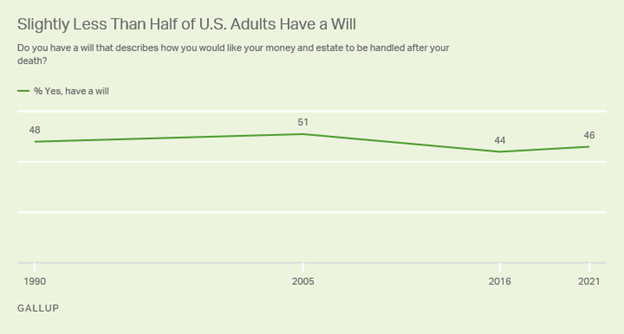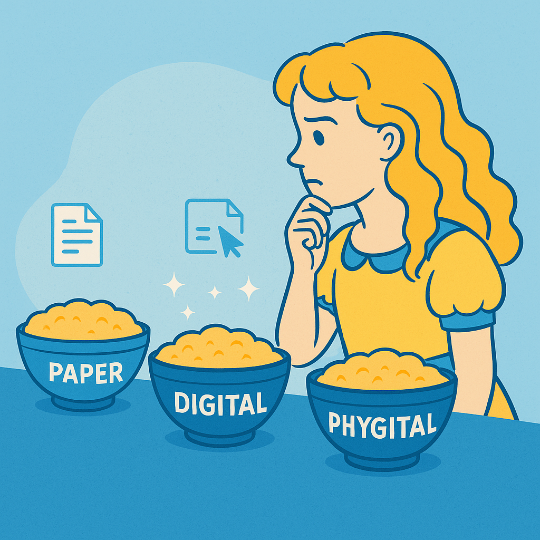1. Introduction – Why Life Essentials Management Matters
In today’s fast-paced, digital-first world, most of us are managing far more than we realize. Bank accounts, online logins, property records, health information, tax returns, wills, and insurance policies all make up the infrastructure of our lives. When things are running smoothly, it is easy to ignore the complexity. But the moment life throws a curveball, an illness, an accident, a natural disaster, or even something as simple as a lost password, the cracks in our systems quickly show. Families scramble, time is wasted, and stress multiplies.
This is why Life Essentials Management is becoming a critical practice. Rather than leaving crucial information scattered across desk drawers, inboxes, and cloud drives, Life Essentials Management is about creating a structured, secure, and accessible system for what matters most. It is not just a filing system, but a living process of organizing, protecting, and sharing key information so that it is available exactly when needed.
The goal is simple: peace of mind. When your essentials are managed properly, you, and your loved ones, can move through life with confidence. Emergencies become easier to handle, everyday tasks are less stressful , and your legacy is preserved with clarity.
This article provides a complete guide to Life Essentials Management. We’ll explore what it means, the categories to include in your file, how to share information safely with family, the best methods for balancing paper and digital storage, and the role this practice plays in everyday preparedness. Each section connects to an in-depth article so you can explore the details further.
2. What Is Life Essentials Management?

At its heart, Life Essentials Management is about turning scattered pieces of your life into a single, organized system . Think of all the essentials you use every day: birth certificates, Social Security cards, wills, bank details, medical records, and digital logins. Left unmanaged, these items often end up buried in email threads, tucked into drawers, or spread across multiple online accounts. When an emergency strikes, finding them quickly becomes nearly impossible.
Life Essentials Management solves this by creating a central vault, a structured hub where all key information is kept up-to-date, secure, and accessible only to you and the people you trust. The practice rests on four core pillars:
- Preparedness: anticipating disruptions by having everything in place before you need it.
- Organization: categorizing documents logically and eliminating scatter.
- Identity protection: shielding sensitive details from breaches or misuse.
- Peace of mind: knowing you and your family are covered in moments of crisis.
Digital services like Proof of Life provide encrypted vaults, reminders to update expiring records, and controlled sharing features. But whether you use a dedicated platform or build your own system, the principle remains the same: clarity replaces chaos .
It is important to treat Life Essentials Management as a living system, not a one-time project. Life changes, accounts are updated, documents expire, and new responsibilities emerge. By making this a continuous practice, you ensure your essentials stay relevant and reliable.
To learn more about the philosophy and practicalities of this process, see our article: What Is Life Essentials Management?
3. The 8 Categories Every Life Essentials File Should Include
Understanding the concept is only half the battle, the real value comes from implementation. A Life Essentials File organizes your critical documents and details into eight intuitive categories. This structure ensures that no matter the scenario, renewing a passport, proving insurance coverage, or managing an estate, information is immediately available.
The categories are:
- Personal identification – birth certificates, Social Security cards, passports, marriage licenses.
- Emergency contacts – family, healthcare providers, lawyers, financial advisors.
- Financial records – bank accounts, investments, loan agreements, tax returns.
- Legal and estate planning documents – wills, trusts, powers of attorney, healthcare directives.
- Medical information – allergies, medication lists, insurance policies, medical histories.
- Insurance policies – homeowners, auto, health, life, and specialized coverage.
- Household information – deeds, leases, mortgage papers, vehicle titles, home inventories.
- Digital legacy – online accounts, password manager details, device access instructions.
Top 10 Categories to Include in a Life Essentials File
This system balances completeness and clarity. Instead of creating one overwhelming binder, you categorize information into manageable sections. That way, both you and your family can find what is needed quickly, even under stress.
Despite the clear advantage of organizing critical documents into essential categories, many Americans remain unprepared. In 2024, only about 32 % report having an estate plan — leaving the majority vulnerable. What’s troubling is that lack of an estate plan is a sure indicator of having no life essentials management file.
Another troubling sign of inadequate life essentials management is that slightly less than half of U.S. adults, 46%, have a will that describes how they would like their money and estate to be handled after their death, according to a Gallup poll. No will generally means no life essentials planning.

To keep the file reliable, review and update regularly. Some events, e.g. tax season, offer a natural reminder. With each review, you ensure that expired insurance policies are replaced, new accounts are added, and personal details stay accurate.
For a full breakdown of what to include in each category, see: Top 8 Categories to Include in a Life Essentials File.
4. How to Share Critical Information with Family Safely
A well-organized file is only useful if loved ones can access it when needed. Yet sharing sensitive details like banking credentials or wills requires balance. Oversharing can overwhelm family members, while poor security can expose you to identity theft. The solution is to share selectively, securely, and with sensitivity.
Here are key principles:
- Assign clearance levels: Not everyone needs everything. Executors may need wills, while a medical proxy should only access healthcare directives. Tailoring access avoids oversharing.
- Stage information: Avoid dumping every detail at once. Share critical documents first (like a healthcare directive), then add financial or personal records gradually.
- Protect data: Use encrypted vaults, password managers, and secure file-sharing tools. Always keep originals in safes or deposit boxes.
- Recognize triggers: Events like hospitalization, retirement, or relocation may change who needs access. Adjust roles accordingly.
Equally important is the emotional aspect. Families under stress may shut down if overloaded with information. Breaking it into manageable chunks, summarizing key points, and scheduling conversations helps prevent confusion and conflict.
Digital platforms such as Proof of Life simplify this process by combining guided organization, secure storage, and controlled access.
For a detailed guide to balancing access, security, and family dynamics, see: “How to Share Critical Information with Family Safely .”
5. Paper vs. Digital: The Best Way to Store Life’s Essentials

One of the most common questions people ask is whether it’s better to store documents physically or digitally. The answer is: both. Each format has unique strengths, and together they create a system that is secure, convenient, and legally sound.
Paper originals are often legally required. Birth certificates, wills, deeds, and powers of attorney must exist in physical form to be valid. These should be kept in fireproof, waterproof safes at home or in bank deposit boxes. For long-term preservation, use archival-quality folders and sleeves to prevent acid damage, and consider climate-controlled storage for extensive collections.
Digital copies, meanwhile, provide accessibility and redundancy. Scanned and encrypted files stored in secure cloud vaults or external drives ensure that even if originals are destroyed, you retain access. Digital backups are also useful for sharing documents with attorneys, healthcare providers, or family members.
The best approach is a hybrid or phygital model: keep originals safe and secure, while maintaining encrypted digital copies for everyday use. For example, your will should stay in a fireproof safe or deposit box, but your executor may also have access to a scanned version in a password-protected system.
This combination provides the best of both worlds, legal validity, long-term security, and practical accessibility.
For a full exploration of methods, from archival storage to encrypted cloud systems, see: “Paper vs. Digital: The Best Way to Store Life’s Essentials.”
6. The Role of Life Essentials Management in Everyday Preparedness
Preparedness is often framed as something for worst-case scenarios: power outages, natural disasters, or sudden hospitalizations. But the reality is that Life Essentials Management strengthens resilience every day, not just in moments of crisis.
Here’s how it enhances everyday life :
- Continuity: If hospitalized, your family can immediately provide doctors with your insurance card and medical history. If forced to relocate, you can quickly prove identity and access funds.
- Organization: Everyday frustrations, like finding tax documents or forgotten logins, become streamlined, saving time and energy.
- Security: Controlled sharing and encrypted storage protect sensitive data from misuse or identity theft.
- Delegated access: By assigning roles (medical proxy, executor, financial power of attorney), you eliminate confusion and delays in decision-making.
- Peace of mind: Knowing your essentials are in order reduces background stress, allowing you to focus on living, not worrying.

This practice also strengthens your legacy. Instead of leaving loved ones scrambling to piece together accounts, policies, and intentions, you provide them with clarity and direction
Preparedness becomes less about fear and more about empowering yourself and your family to thrive despite uncertainty.
For deeper insights on how Life Essentials Management supports resilience, see: “The Role of Life Essentials Management in Everyday Preparedness.”
7. Conclusion – Living Confidently with Life Essentials Management
Life Essentials Management is not about being paranoid or dwelling on worst-case scenarios. It is about living confidently, with clarity and continuity. When your essentials are organized, protected, and accessible, you, and your family, can handle both everyday challenges and unexpected emergencies with far less stress.
This guide has shown the framework:
- What Life Essentials Management is and why it matters.
- The eight categories every file should include.
- How to share critical information securely and sensitively.
- Why paper and digital storage complement each other.
- How preparedness translates into daily resilience.
- Building a Life Essentials Checklist: Step-by-Step Guide
- Digital Security Basics for Protecting Your Life Essentials
- Life Transitions That Demand an Update to Your Essentials File
- How Professionals Use Life Essentials Management (Doctors, Lawyers, Caregivers)
- he Psychology of Peace of Mind: Why Organizing Your Essentials Reduces Stress
The practice is ongoing. Documents expire, roles shift, and life circumstances evolve. Reviewing and updating your Life Essentials File at least annually ensures your system stays reliable.
Ultimately, the reward is peace of mind. Emergencies may be inevitable, but confusion is not. By practicing Life Essentials Management, you not only protect yourself, you also give your family the gift of order and clarity in times of uncertainty.
That is the true power of Life Essentials Management: not just surviving life’s disruptions, but thriving with confidence.


